37 UMMA Objects
37 UMMA Objects
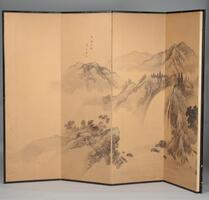
Japanese (Japanese (culture or style))
White Clouds and Red Trees
1940 – 1950
Gift of the Estate of Emily Jameson
1996/2.18
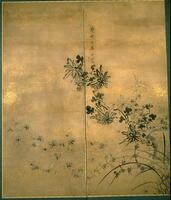
Ikeno Taiga
Orchids and Chrysanthemums
18th century
Given in memory of Calvin L. French by Fina and John E. Bardach
1986/2.10
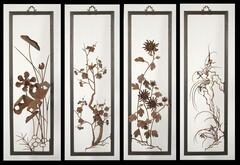
Chinese (Chinese (culture or style))
One of Four-panel Screen Depicting the Seasons
1867 – 1899
Gift of S.W. Hoobler in memory of his parents, Madge Sibley, BA 1904, and Doctor B. Raymond Hoobler
1982/2.41.1
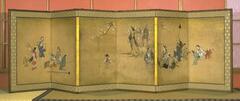
Japanese (Japanese (culture or style))
Monkey Dance Under White Plum Blossoms (pair with Lion Dance, 1987/1.363.1)
1730 – 1740
Museum purchase made possible by the Margaret Watson Parker Art Collection Fund
1987/1.363.2
Japanese (Japanese (culture or style))
Scene from the Tale of Genji
1615 – 1868
Gift of Willard A. and Marybelle Bouchard Hanna
1991/2.30
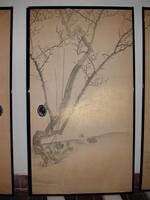
Yokoyama Seiki and Okajima Seikō;Okajima Seikō
A side: Mandarin ducks and plum trees, by Yokoyama SeikiB side: Lakeside landscape, by Okajima Seikô
1850 – 1865
Gift of Helmut Stern
2003/1.405.3
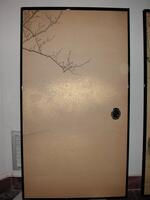
Yokoyama Seiki and Okajima Seikō;Okajima Seikō
A side: Mandarin ducks and plum trees, by Yokoyama SeikiB side: Lakeside landscape, by Okajima Seikô
1850 – 1865
Gift of Helmut Stern
2003/1.405.4
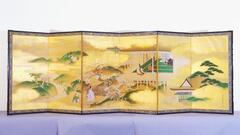
Kanō Tsunenobu
Genji espies Murasaki for the first time, from the Wakamurasaki chapter of The Tale of Genji
1670 – 1680
Museum Purchase made possible by the Friends of the Museum of Art
2002/1.168
Chinese (Chinese (culture or style))
Folding Coromandel Screen (Six-Panels)
1700 – 1999
Bequest from the Estate and Trust of Elise Reeder Olton
2014/1.619C
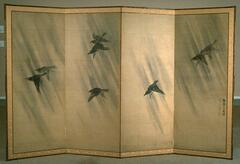
Yosa Buson (Japanese (culture or style))
Crows Flying Through Rain
18th century
Museum purchase made possible by the Margaret Watson Parker Art Collection Fund
1965/1.177

19th century
Museum purchase made possible by the Margaret Watson Parker Art Collection Fund
1965/1.178
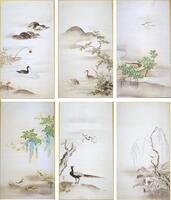
19th century
Museum purchase made possible by the Margaret Watson Parker Art Collection Fund
1965/1.179
Loading…
